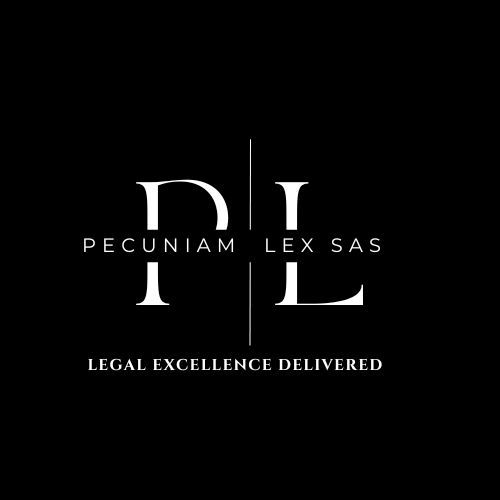Corporate Criminal Liability: Understanding the Risks
Phillips J. Diaz-Vicioso LL.M.
April 29, 2015
Justice and Divine Vengeance Pursuing Crime (1805-1806) by Pierre-Paul Prud'hon

In today's complex regulatory environment, corporate criminal liability represents a significant risk for businesses operating across various sectors. This form of liability holds corporations, not just individuals, accountable for criminal activities conducted in the name or interest of the business. Understanding the scope, implications, and preventive measures associated with corporate criminal liability is crucial for companies aiming to mitigate risks and maintain compliance with the law. This article explores the concept of corporate criminal liability, its potential impact on businesses, and strategies for safeguarding against such risks.
The Basis of Corporate Criminal Liability
Corporate criminal liability arises when a corporation is found to be legally responsible for criminal acts committed by its employees, officers, or agents. The principle that a corporation can be held liable is rooted in the understanding that businesses, like individuals, can engage in conduct that breaches criminal laws. This liability extends to a wide range of offenses, including but not limited to fraud, bribery, environmental crimes, and financial misconduct.
Key Factors Contributing to Liability
- Vicarious Liability: Corporations can be held liable for the actions of their employees if these actions are within the scope of their employment and intended, at least in part, to benefit the corporation.
- Failure to Prevent Crime: Corporations may also face liability if they fail to take reasonable steps to prevent criminal conduct within the organization, highlighting the importance of effective compliance programs.
Implications of Corporate Criminal Liability
The consequences of corporate criminal liability can be severe, impacting a company's financial health, reputation, and operational capabilities. Potential penalties include substantial fines, remediation costs, operational restrictions, and in some cases, the dissolution of the corporation. Beyond legal penalties, the reputational damage associated with criminal liability can significantly affect stakeholder trust and market position.
Strategies for Mitigation
Implementing Robust Compliance Programs
Developing and enforcing comprehensive compliance programs is essential for preventing criminal conduct. Such programs should include clear policies, employee training, regular audits, and mechanisms for reporting and addressing misconduct.
Cultivating a Culture of Ethics and Compliance
Fostering an organizational culture that prioritizes ethical behavior and compliance with the law can significantly reduce the risk of criminal liability. Leadership should actively promote ethical standards and ensure that these values are integrated into all aspects of the business.
Conducting Due Diligence
Regularly conducting due diligence on employees, business partners, and third-party vendors can help identify potential risks and prevent involvement in criminal those in high-risk positions or involved in regulatory compliance, are crucial. These programs should cover the legal obligations of the corporation and its employees, emphasizing the importance of ethical conduct and adherence to internal policies. Training should be updated regularly to reflect changes in law and industry standards, ensuring that employees are aware of emerging risks and how to respond appropriately.
Establishing Effective Reporting Mechanisms
An essential component of a robust compliance program is the establishment of secure, anonymous reporting channels through which employees can report suspected misconduct without fear of retaliation. These mechanisms encourage a culture of transparency and accountability, allowing corporations to address issues internally before they escalate into criminal liability.
Conducting Internal Investigations
Upon learning of potential wrongdoing, corporations should promptly conduct thorough internal investigations to assess the scope and impact of the alleged misconduct. These investigations, ideally led by external legal counsel or a dedicated compliance team, can help in taking corrective action, demonstrating the corporation’s commitment to rectifying issues and cooperating with law enforcement agencies, if necessary.
Cooperating with Authorities
In cases where criminal conduct is identified, cooperating with law enforcement and regulatory authorities can be a mitigating factor in determining the corporation’s liability and penalties. Cooperation includes sharing the findings of internal investigations, providing access to documents, and facilitating interviews with employees.
Reviewing and Strengthening Compliance Programs Post-Incident
After addressing the immediate issues, it is vital for corporations to review and, if necessary, overhaul their compliance programs to prevent future misconduct. This may involve revising policies, enhancing training programs, and improving monitoring and enforcement mechanisms. Learning from incidents of misconduct is crucial for building a more resilient and ethical organization.
Legal and Reputational Recovery Strategies
In addition to legal compliance measures, corporations must also consider strategies for legal and reputational recovery post-incident. This includes transparent communication with stakeholders about the steps taken to address the misconduct, ongoing efforts to improve corporate governance, and community engagement initiatives to restore trust.
Leveraging Technology for Compliance
Advancements in technology offer corporations powerful tools to enhance their compliance programs. Automated systems can monitor transactions for signs of fraud, data analytics can identify patterns of misconduct, and digital training platforms can provide accessible education on compliance topics. Investing in technology can significantly augment a corporation's ability to detect and prevent criminal conduct.
Conclusion
Corporate criminal liability is a significant risk in today’s business environment, requiring diligent attention and proactive management. By implementing comprehensive compliance programs, fostering an ethical culture, conducting due diligence, and leveraging legal and technological resources, corporations can navigate these challenges effectively. Ultimately, the goal is to create an environment where ethical conduct is the norm, and the risks of criminal liability are significantly minimized, ensuring the corporation’s long-term success and integrity.












